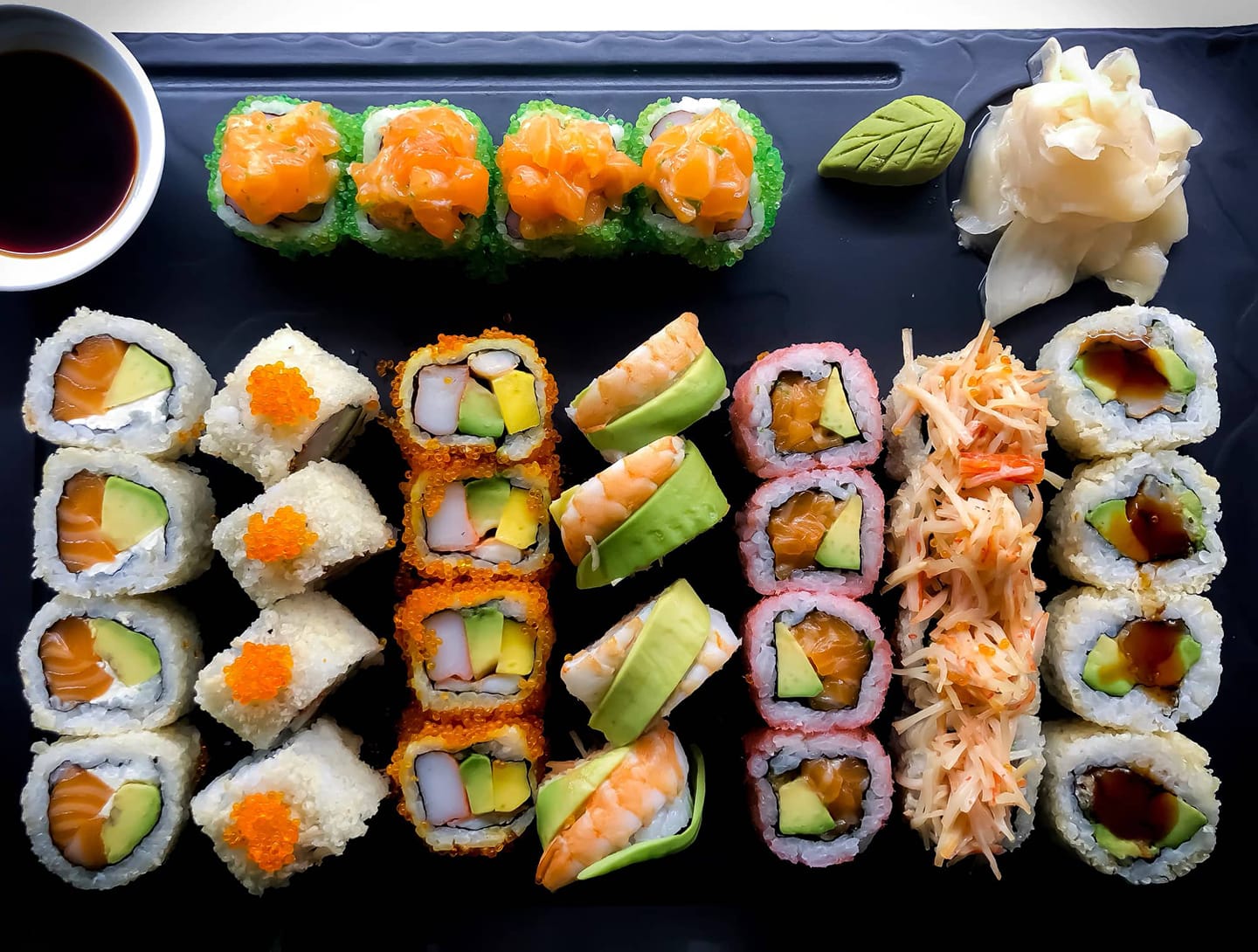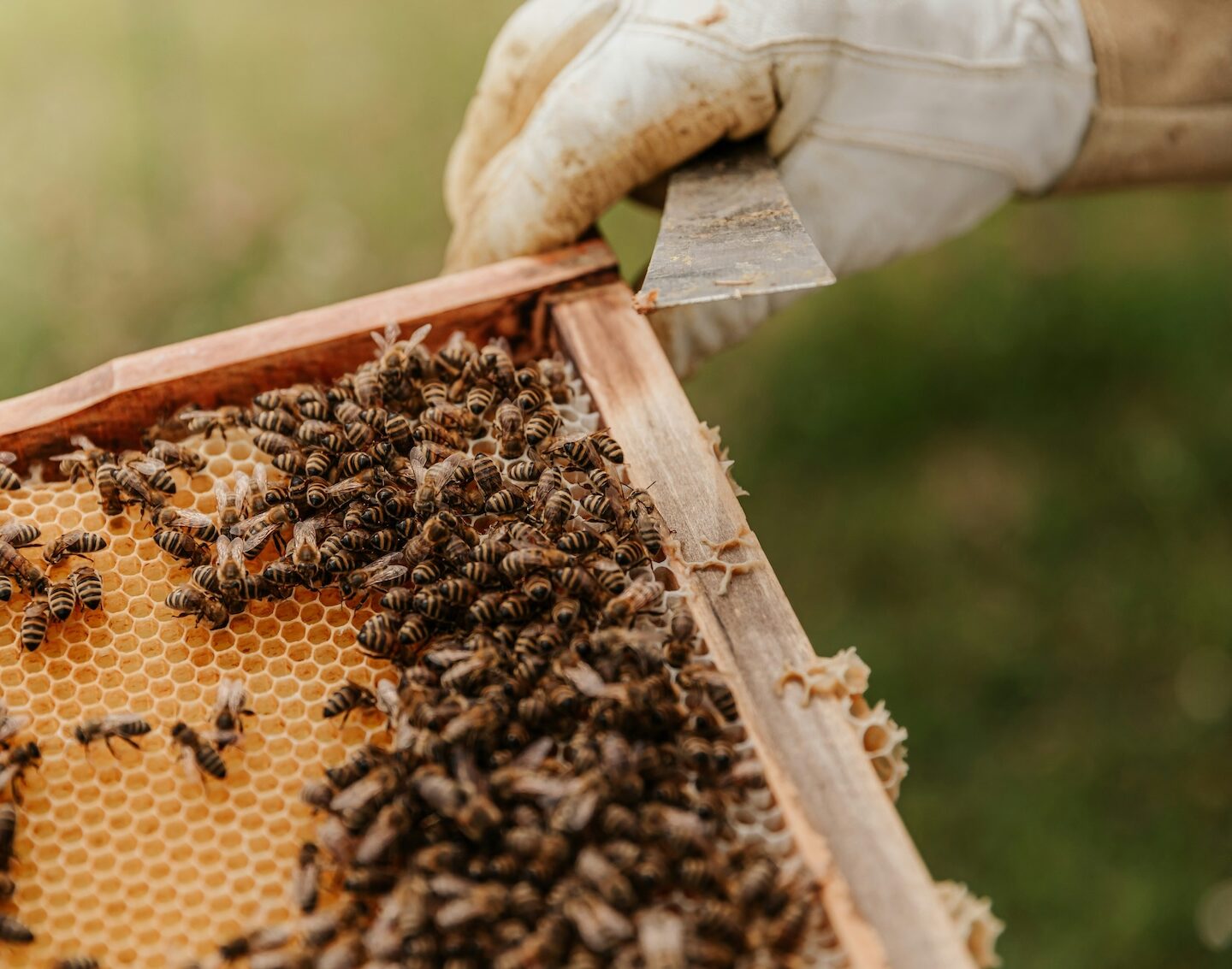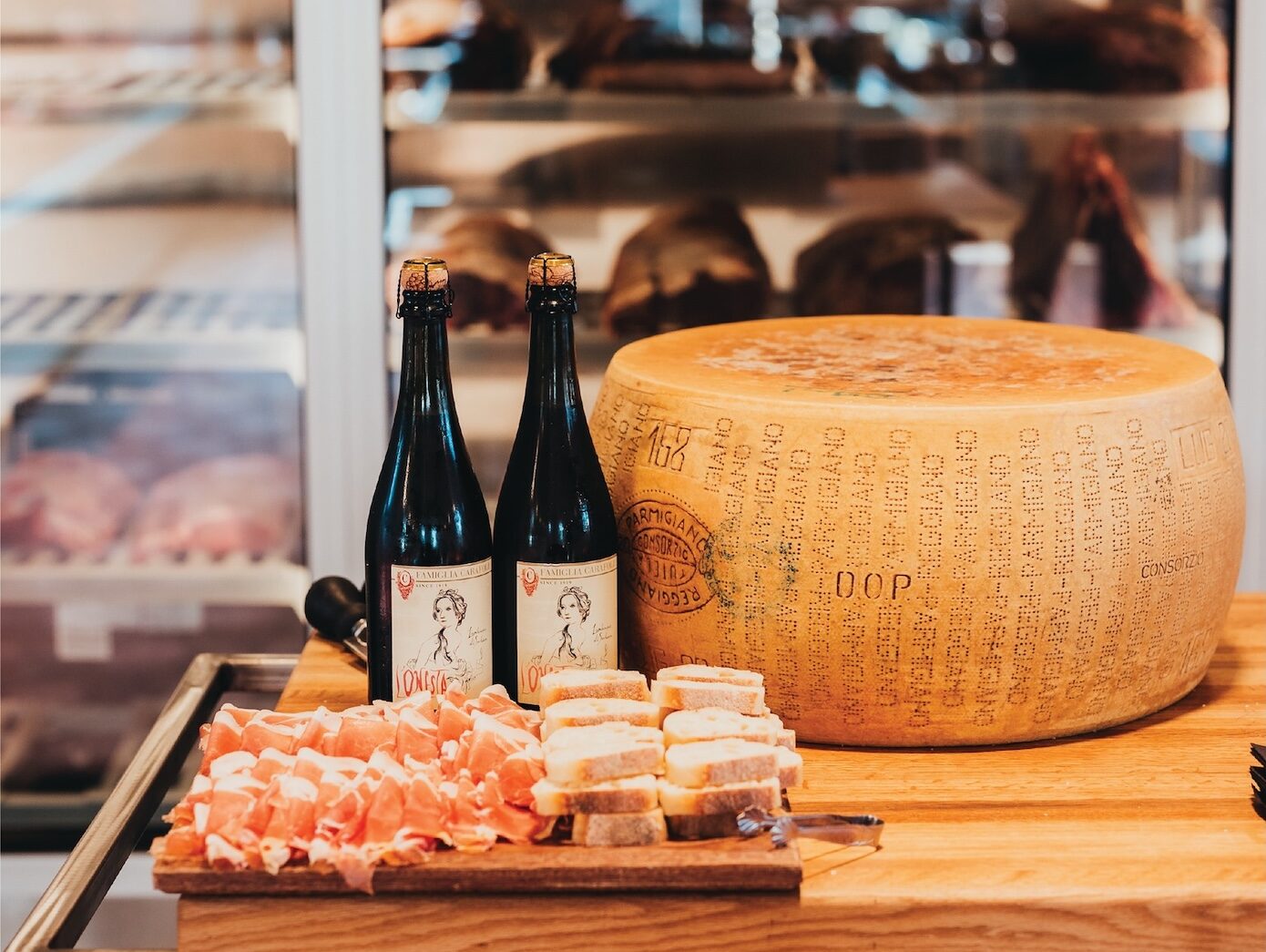[fusion_builder_container hundred_percent=”no” equal_height_columns=”no” menu_anchor=”” hide_on_mobile=”small-visibility,medium-visibility,large-visibility” class=”” id=”” background_color=”” background_image=”” background_position=”center center” background_repeat=”no-repeat” fade=”no” background_parallax=”none” parallax_speed=”0.3″ video_mp4=”” video_webm=”” video_ogv=”” video_url=”” video_aspect_ratio=”16:9″ video_loop=”yes” video_mute=”yes” overlay_color=”” video_preview_image=”” border_color=”” border_style=”solid” padding_top=”” padding_bottom=”” padding_left=”” padding_right=”” type=”flex”][fusion_builder_row][fusion_builder_column type=”1_1″ layout=”1_1″ background_position=”left top” background_color=”” border_color=”” border_style=”solid” border_position=”all” spacing=”yes” background_image=”” background_repeat=”no-repeat” padding_top=”” padding_right=”” padding_bottom=”” padding_left=”” margin_top=”0px” margin_bottom=”0px” class=”” id=”” animation_type=”” animation_speed=”0.3″ animation_direction=”left” hide_on_mobile=”small-visibility,medium-visibility,large-visibility” center_content=”no” last=”true” min_height=”” hover_type=”none” link=”” border_sizes_top=”” border_sizes_bottom=”” border_sizes_left=”” border_sizes_right=”” first=”true”][fusion_text columns=”” column_min_width=”” column_spacing=”” rule_style=”default” rule_size=”” rule_color=”” content_alignment_medium=”” content_alignment_small=”” content_alignment=”” hide_on_mobile=”small-visibility,medium-visibility,large-visibility” sticky_display=”normal,sticky” class=”” id=”” font_size=”” fusion_font_family_text_font=”” fusion_font_variant_text_font=”” line_height=”2″ letter_spacing=”” text_color=”” animation_type=”” animation_direction=”left” animation_speed=”0.3″ animation_offset=””]
Considering that you can find sushi in most grocery stores these days, it’s easy to conclude that this Japanese delicacy has jumped the shark. But the question remains — grocery store iterations aside — where can you find the best sushi in Alabama?
Plenty of restaurants still take sushi seriously, paying attention to the quality and diversity of what they offer while still meeting customer demand for approachable and familiar preparations.
A few simple indicators help separate the magnificent from the mundane. Experts say a sushi chef’s skill can be measured by the restaurant’s saba, mackerel that’s cured in salt and vinegar. In skilled hands it’s full-flavored and not unpleasantly “fishy.”
Variety is another potential quality indicator. Look for scallops, crispy salmon skin and seasoned baby octopus joining the menu with standards like tuna, salmon and yellowtail. Some purists choose a restaurant based on how many (in this case you want few) of its maki rolls contain cream cheese, which is great on bagels but sushi aficionados say it cheapens and sometimes overwhelms the fish and other ingredients. And the relative presence of real crab speaks loudly about a sushi bar; crab stick (also known as imitation crab) — fish processed to look like crab-leg meat — is no substitute.
One truth is universal: Expect maki roll names that pay tribute to something local. In Alabama, references to the state’s two college football powerhouses are inevitable.
Here are a few restaurants around the state that hit many of these sushi highlights. Let us know where else you can find the best sushi in Alabama.
Mikato (Gulf Shores)
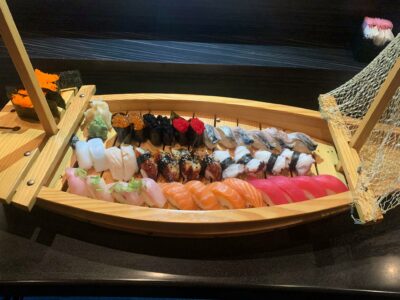
Mikato/Facebook
Nearly two dozen nigiri options (fish on palm-pressed rice) include conch, snow crab, and scallop (raw or cooked). Maki options include crisp and salty salmon skin; War Eagle and Roll Tide rolls; and combos like the Volcano roll (crab, cucumber, and avocado inside; baked spicy scallops, spicy mayo, and tempura bits on top).
[iee_empty_space type=”vertical” height=”10″ width=”10″ hide_on_mobile=”small-visibility,medium-visibility,large-visibility” class=”” id=””][/iee_empty_space]
See-Wee-Roll (Mobile)
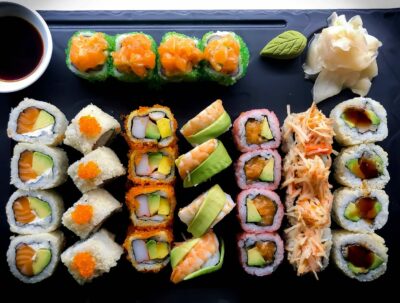
See-Wee-Roll/Facebook
This restaurant has a heart for Louisiana, naming maki for LSU and (Hurricane) Katrina. Po Boy rolls (soft-shell crab, tempura shrimp, crawfish, lettuce, and sauce) meld Japanese and NOLA cultures. Real snow crab features in Mobile and Southern Alabama rolls. The menu includes more than a dozen nigiri options and some four-dozen standard and specialty maki such as crawfish and the cucumber-wrapped Naruto Roll.
[iee_empty_space type=”vertical” height=”10″ width=”10″ hide_on_mobile=”small-visibility,medium-visibility,large-visibility” class=”” id=””][/iee_empty_space]
Sushi Café (Montgomery)
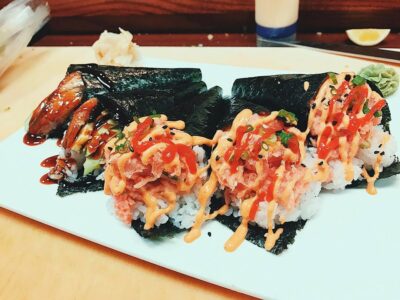
Sushi Cafe/Facebook
Kudos for having Temaki handrolls — rice, fish, and other fillings in toasted seaweed that’s wrapped into trumpet-shaped cones. A good nigiri selection features baby octopus, snow crab, salmon roe, and raw quail egg. Some maki gets out there (torched-beef Bulgogi Roll), but many bring it back to basics, like the Green Grass (tempura shrimp, avocado, and asparagus wrapped in soy paper).
[iee_empty_space type=”vertical” height=”10″ width=”10″ hide_on_mobile=”small-visibility,medium-visibility,large-visibility” class=”” id=””][/iee_empty_space]
Sushiya (Auburn)
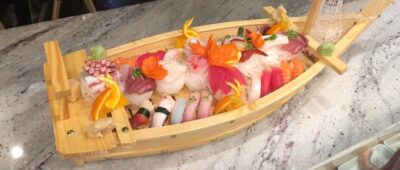
Sushiya/Facebook
Nearly two-dozen nigiri and sashimi (sliced fish, no rice) options include hotategai (scallop) and ama ebi (raw sweet shrimp served with the heads tempura-fried). Maki understandably name-checks only Auburn University (no Roll Tide rolls here). Pink Floyd and Burning Love rolls also rock the menu. If sharing floats your boat, the largest combo, Special #2, has 20 nigiri pieces, 40 sashimi slices, and three maki.
[iee_empty_space type=”vertical” height=”10″ width=”10″ hide_on_mobile=”small-visibility,medium-visibility,large-visibility” class=”” id=””][/iee_empty_space]
Hokkaido (Tuscaloosa)

Hokkaido/Facebook
Naturally, the maki menu includes Roll Tide, Crimson, and Bama rolls. Cream cheese frequently appears in specialty rolls, but some leave it out, like the Ebi Roll (fried shrimp, snow crab, orange fish roe, and vegetables wrapped in soy paper and painted with sweet-savory eel sauce). Nigiri and sashimi includes scallop and real crab salad.
[iee_empty_space type=”vertical” height=”10″ width=”10″ hide_on_mobile=”small-visibility,medium-visibility,large-visibility” class=”” id=””][/iee_empty_space]
Samurai (Birmingham)
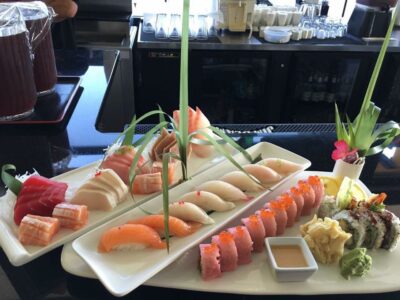
Samurai/Facebook
Tucked into the side of the Vestavia City Center with little visibility, fans call Samurai a hidden gem and that’s an understatement. But it boasts perhaps the most extensive menu in the metro area for nigiri (23 choices), handrolls and maki rolls (more than 80) featuring cooked and raw fish, along with several options for vegetarians.
[iee_empty_space type=”vertical” height=”10″ width=”10″ hide_on_mobile=”small-visibility,medium-visibility,large-visibility” class=”” id=””][/iee_empty_space]
Ichiban (Florence and Sheffield)
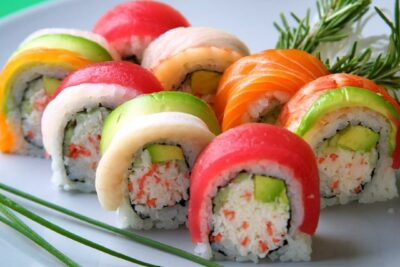
Ichiban Florence/Facebook
Try futomaki, the fat (roughly two inches thick) rolled sushi with crab, avocado, cucumber, and pickled radish. Salmon skin appears in maki and hand rolls. Ichiban also goes beyond the usual spicy rolls (tuna, yellowtail, salmon), with scallop and red snapper offerings, too. Among nearly two dozen nigiri choices are ama ebi and white tuna.
[iee_empty_space type=”vertical” height=”10″ width=”10″ hide_on_mobile=”small-visibility,medium-visibility,large-visibility” class=”” id=””][/iee_empty_space]
Four Leaves (Huntsville)

Four Leaves/fourleavesal.com
The Scorpion Roll, sliced and presented to resemble the desert denizen, tops a lengthy list of creative and visually appealing maki. Other decorative shapes include arched doorways and cherry blossoms. Nearly two dozen nigiri or sashimi options — especially sea urchin (uni), fatty tuna (toro), and ama ebi — also make this restaurant stand out.
Be sure to check with all restaurants for current hours, in-house dining options, and reservation information.
[/fusion_text][/fusion_builder_column][/fusion_builder_row][/fusion_builder_container]
